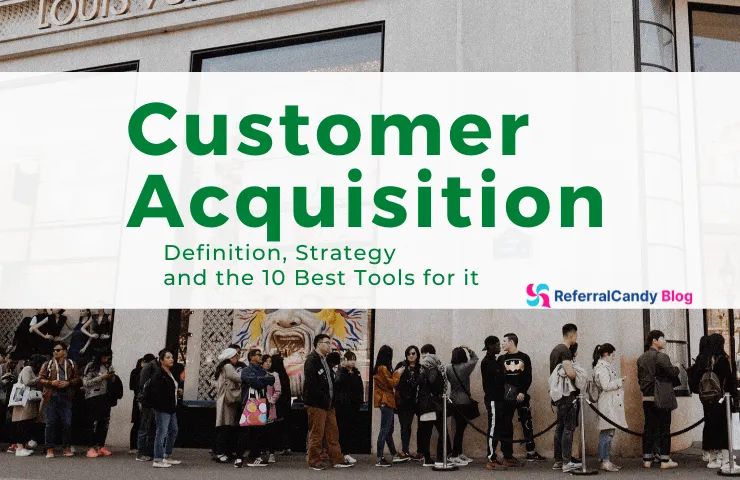
What is a business without its customers?
Nothing. It’s just an idea.
As you can imagine, acquiring potential customers is the main goal for many businesses. Because what are they without their customers?
It’s the main reason why you continue to create marketing materials, use onsite retargeting, engage in out-of-home advertising, and utilize straight-through processing.
Basically, getting potential customers to your shop is the main reason why you do anything at all. Right?
If you’re an entrepreneur, you know that getting new customers onto the sales cycle is a long and arduous task...
...in fact, there’s a sort of science to the customer acquisition process.
One thing is for sure: you don’t attract new customers randomly.
Instead, you create a strategy for acquiring new customers, pulling from different places all over the internet (and maybe in real life, too).
And if you haven’t created a customer acquisition plan yet, then it’s time to do so.
That’s exactly what this blog post is for.
In this blog post, I’ll break down how to create a customer acquisition strategy or improve your current acquisition plans. After finishing this article, you can effectively market your business, bring in new customers to your online store, and increase your conversion rate from curious shoppers to bonafide buyers and grow your revenue.
So where do we begin?
Let’s discuss the difference between customer acquisition and customer retention.
Table of Contents
Customer acquisition, as the name implies, simply refers to the process of acquiring customers.
Though it goes hand-in-hand with customer retention, they don’t mean the same thing.
An important figure that many marketers talk about is your retention rate, which is the rate at which existing customers return to your online store.
The ultimate goal of every business owner is to acquire new customers and to keep the existing customers.
Why?
If you have a low customer churn rate, meaning that they don’t ditch your store after the first purchase, and a high customer lifetime, then you don’t need to spend so much time and effort marketing your products to new customers.
Not only that but having a higher customer lifetime will also increase your sales.
So as you begin to brainstorm ways to bring in new customers, always keep in mind that the ultimate goal is to make them loyal customers.
Crazy Egg found that there’s an imbalance in the focus on customer acquisition and retention among entrepreneurs and marketing teams.
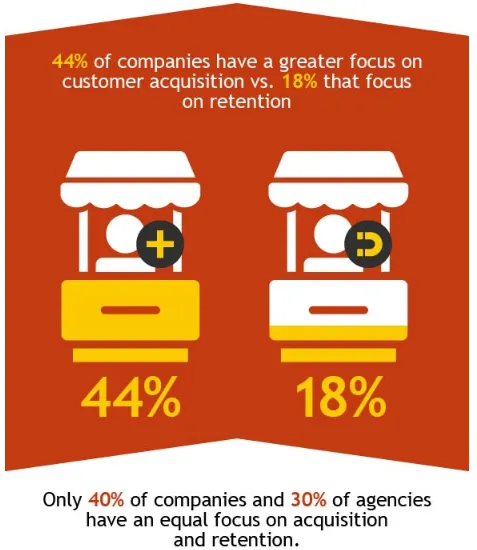
Customer acquisition and retention go hand in hand. They are both essential to a successful business model.
After all, if you spend all of your time and money on getting potential customers to your online shop, whether through out-of-home advertising, word-of-mouth marketing, or even advanced digital tools offered by leading AI development companies, but then those customers never return, it’s basically cash out the window.
And if you have somehow built a cult-like loyal customer base that never grows, your business will remain stagnant.
You need to continuously bring in new buying customers as well as keep your existing customers coming back, month after month.
First things first, though, let’s develop a reliable customer acquisition strategy that brings in fresh potential customers through a wide variety of channels. A solid prospect list building step ensures you’re targeting the right buyers before you invest in campaigns.
Creating a customer acquisition plan doesn’t need to be overly complex or fancy. You just need to figure out what the potential costs are, where your potential buyers are hanging out online, and how you can most effectively get them to your online store.
This can be done in three simple steps.
Each new customer comes at a cost. Whether it's the price of a click from a Google ad or the upfront costs associated with influencer marketing, all customer acquisition methods come with a cost.
And finding a successful customer acquisition strategy comes down to how much it will cost your company to bring in a new customer.
After all, if the customer acquisition process costs more than what your prospective customers will even spend in your shop, then you'll be losing money even as you increase your sales.
The first step is to determine your customer acquisition cost or CAC. The CAC is calculated by dividing marketing expenses by the number of customers acquired.
Basically, figuring out how much it costs to acquire customers, per customer.
The formula for CAC is:
CAC = MC / CA, where:
To begin the process of calculating the cost of customer acquisition, list all of your marketing expenses. This includes manpower salary, campaign spend, and the price of all resources used to make the campaign.
Here’s how you can calculate CAC with the complete marketing expenses:
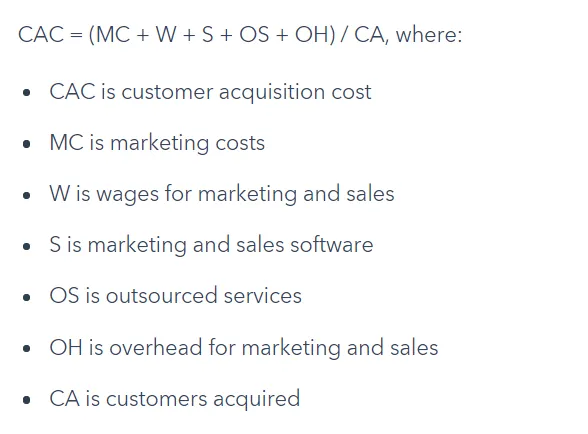
Source: Hubspot.com
CAC = (MC + W + S + OS + OH) / CA, where:
So why do you need to do this?
We aren’t trying to target a magical number to create the perfect acquisition strategy (though wouldn’t that be nice?).
Instead, it is a solid metric from which you can gauge the effectiveness of your current strategy and any upcoming marketing campaigns. It is the easiest way to monitor your Return On Investment (ROI) and to keep tabs on your marketing expenses.
As you begin to roll out your new strategies, be sure to check in with your CAC regularly. If the costs become too high, then adjust your plan either by reducing your marketing expenses or increasing the value per customer purchase. One way to keep your CAC in check is to cut down on the software costs that pile up behind the scenes. Platforms like Join Secret give statups access to exclusive discounts on marketing tools, analytics platforms, and other SaaS products that can erat into your acquisition budget.
Ideally, all of your customer acquisition strategies will be aimed at a very specific target market. Or, in your case, your target audience. Your target audience is the group of prospective customers who you want to buy your products and services.
You can define them by creating a buyer persona that represents demographic factors (i.e. age, income, location, gender) or psychographic factors (i.e. personality, interests).
As you are creating your customer acquisition plan, consider these things:
These questions let you get in the head of potential buyers and more easily find them online.
Once you have established a buyer persona, you can identify the ideal marketing channels, such as social media or content marketing, for acquiring your desired customers.
Knowing where and how to capture your target customers lets you spend your resources wisely.
Not only that, but it also helps you when you’re creating onsite retargeting campaigns so that you can accurately target the profile of your paying customers.
Needless to say, identifying your target audience is an extremely important step in creating your acquisition strategy.
Now that you know about how much money it currently costs and potential costs to acquire customers as well as where your customers are hanging out online, it’s time to put together a strategy.
And, to be honest, that doesn’t take all that much time at all.
Luckily for you, there are already several proven effective strategies that you can implement in your eCommerce business.
Content marketing is an effective customer acquisition strategy that works for all types of businesses. Consumers and professionals constantly search for ebooks, social media posts, videos, and blog posts that are relevant to them. Another way to support your content marketing efforts is through inbound outreach - attracting potential customers with personalized, value-led conversations instead of cold pitches.
Sharing your expertise and industry knowledge can help your brand build authority and boost lead generation.
Not only that, but it also builds authority on search engines, making them much more likely to recommend your eCommerce business when users are searching for your products.
Content creation is an excellent inbound marketing strategy because it casually invites potential buyers to your online store through search engines and through valuable content pieces, such as how-to guides and instructional videos.
Interacting with customers through live chat is an effective way to find out what they want and then hand-deliver it to them.
Even better, it is all automated, giving your potential customers immediate satisfaction and opening the door to your shop right when they’re most likely to make a purchase.
In fact, Gartner predicts that by 2020, 85% of consumer interactions will take place without any human interaction at all.
Aerie and American Eagle have begun to use live chat to interact with their consumers and narrow down their product search.
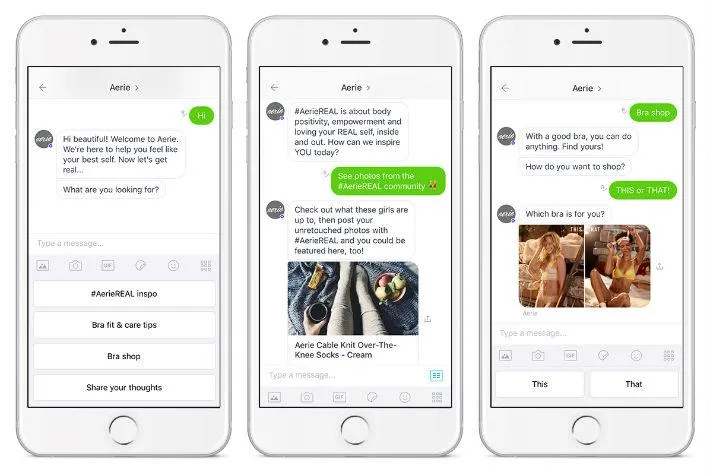
You can see that the customer responses are already built into the live chat, making it easier than ever for customers to engage with their brand.
Why is this important?
The fewer barriers to entry that your potential customers have, the more likely they’ll end up on your website. And the easier that you make it for them to find what they’re looking for, the more likely they’ll convert into paying customers.
As you can imagine, an automated live chat software program is an excellent and cost-efficient customer acquisition tool that can easily be added to your overall user acquisition plan.
Anyone who says that email marketing is dead is sorely mistaken (and probably advertising an alternative marketing strategy).
Though email marketing seems antiquated in the age of videos and interactive content, it can be used to engage with customers, promote free trials, send discounts, and link to quality content.
In fact, your email list also a potentially untapped goldmine of paying customers.
Why?
Purchases made through email offers are often 138 percent higher in value than purchases made organically. For potential customers who have ended up on your email list, they are more likely to come back to your store and make a purchase that is significantly more valuable than if they stumbled across your shop through social media or search engines.
This makes it an incredibly powerful marketing tool for both customer acquisition as well as customer retention.
Emails are also a non-intrusive way to communicate and engage with your customers. You get to send messages to their inbox, unlike social media or search engines, which rely on algorithms and user behavior.
Over 90 percent of customers trust word-of-mouth recommendations. Not only that, but ReferralCandy also found that consumers are up to 50x more likely to buy a company’s products if it's recommended by close friends, family, or influencers.
Referral programs help drive many new customers to the site and to a product page, getting them one step closer to becoming a paying customer.
A simple referral program that rewards both the referrer as well as the purchaser can bring in a lot of extra traffic and buyers that may not have considered your eCommerce business beforehand.
Using referrals as a customer acquisition channel puts the work of bringing in new customers on your existing customers, allowing you to invest your time and money in other potential acquisition channels.
Just like any business endeavor, customer acquisition management is an ongoing process that requires continuous testing and monitoring.
You have to regularly test and analyze your marketing efforts to know that what you’re doing is actually working.
After all, if you’re putting in tons of time and money into different campaigns but not earning any new customers, then what’s the point?
So it’s super important that you constantly check up on your marketing efforts and any related results.
The best way to do this is to monitor user behavior and conversions. Meaning, you need to keep your finger on the customer pulse to see what they respond to and what makes them purchase your products.
Tools like Google Analytics have a heatmap that can help you understand how consumers interact with your landing pages.
A heatmap can show you what customers engage with on your site so you know what works and what is mostly overlooked.
Another helpful way to determine what works on your site is to simply test everything that you do, whether it’s the copy that you put or the design of your landing page.
This can most easily be tested with A/B testing, which allows you to publish two different versions of your page simultaneously to see which results in higher conversions.
AKA, which version makes you the most money.
A/B testing a shopping cart or landing page can give you the data you need to improve your click-through rate and to find the right angle for copywriting. With Google Analytics, you can run multiple A/B tests and aggregate the data you need to optimize your landing pages and shopping carts.
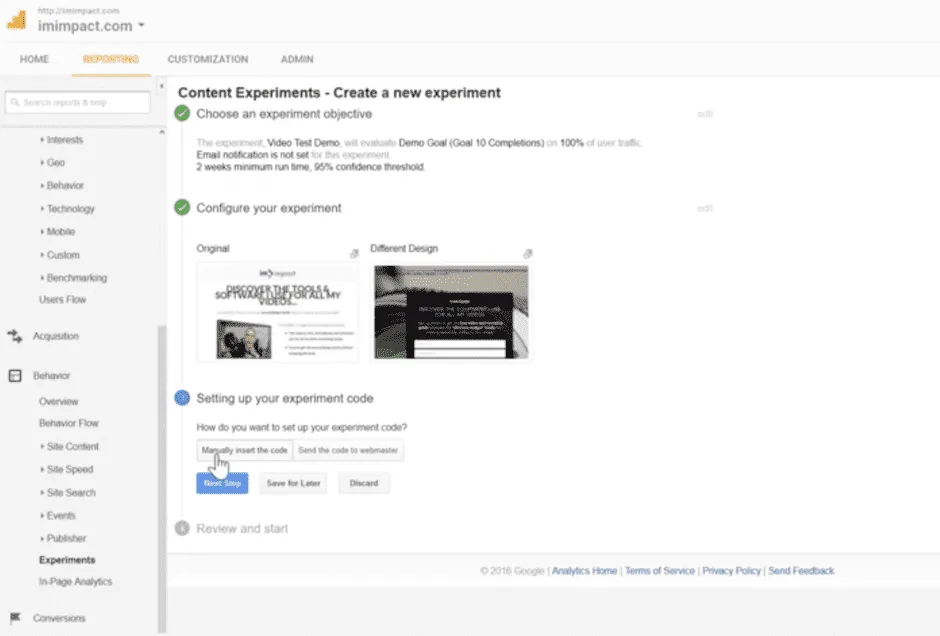
Once you’ve analyzed and tested your results, it’ll be much easier to implement the changes that you need.
Because let’s face it, it’s a lot more efficient to rely on research-backed data instead of your gut feelings.
Luckily for you, there are already tons of tools to help you acquire customers easily. These customer acquisition tools are designed by experts in the industry who understand what converts a potential customer into a paying one. To make customer acquisition more data-driven, brands can leverage Kanerika’s AI and automation solutions to analyze customer behavior and optimize acquisition strategies.
They also understand how to appeal to a savvy and busy business owner, like you, making these tools some of the easiest to set up and manage.
Here are the top 10 customer acquisition tools on the market in 2019.
How much does it cost? Starts at $0 per month.
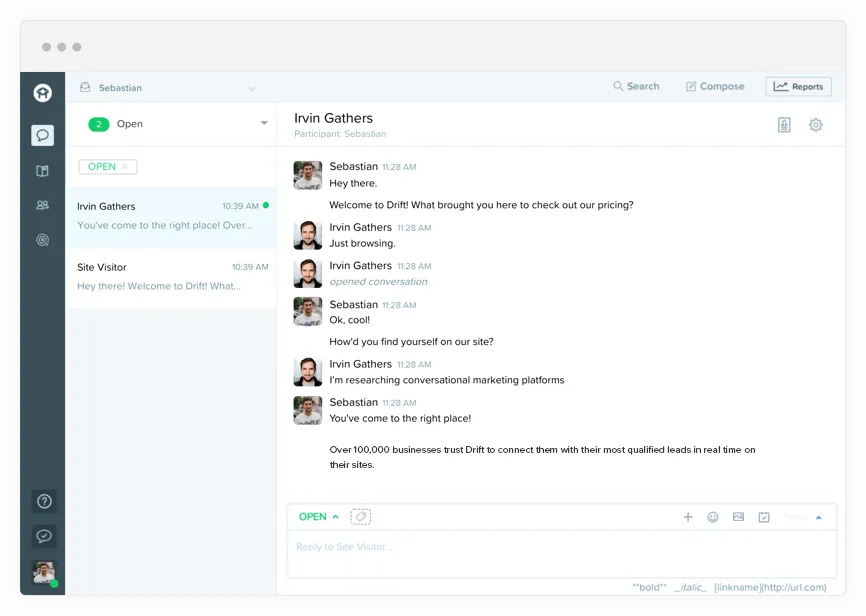
Drift turns conversations into conversions.
Instead of traditional marketing forms and sign-ups, Drift’s chatbot connects your prospects with your sales reps. It then asks qualification questions based on what matters most to your business.
This can exponentially cut weeks or days from the sales cycle since your sales rep will only be in touch with good prospects.
How much does it cost? Free plan. Paid plans start at $8 per month.
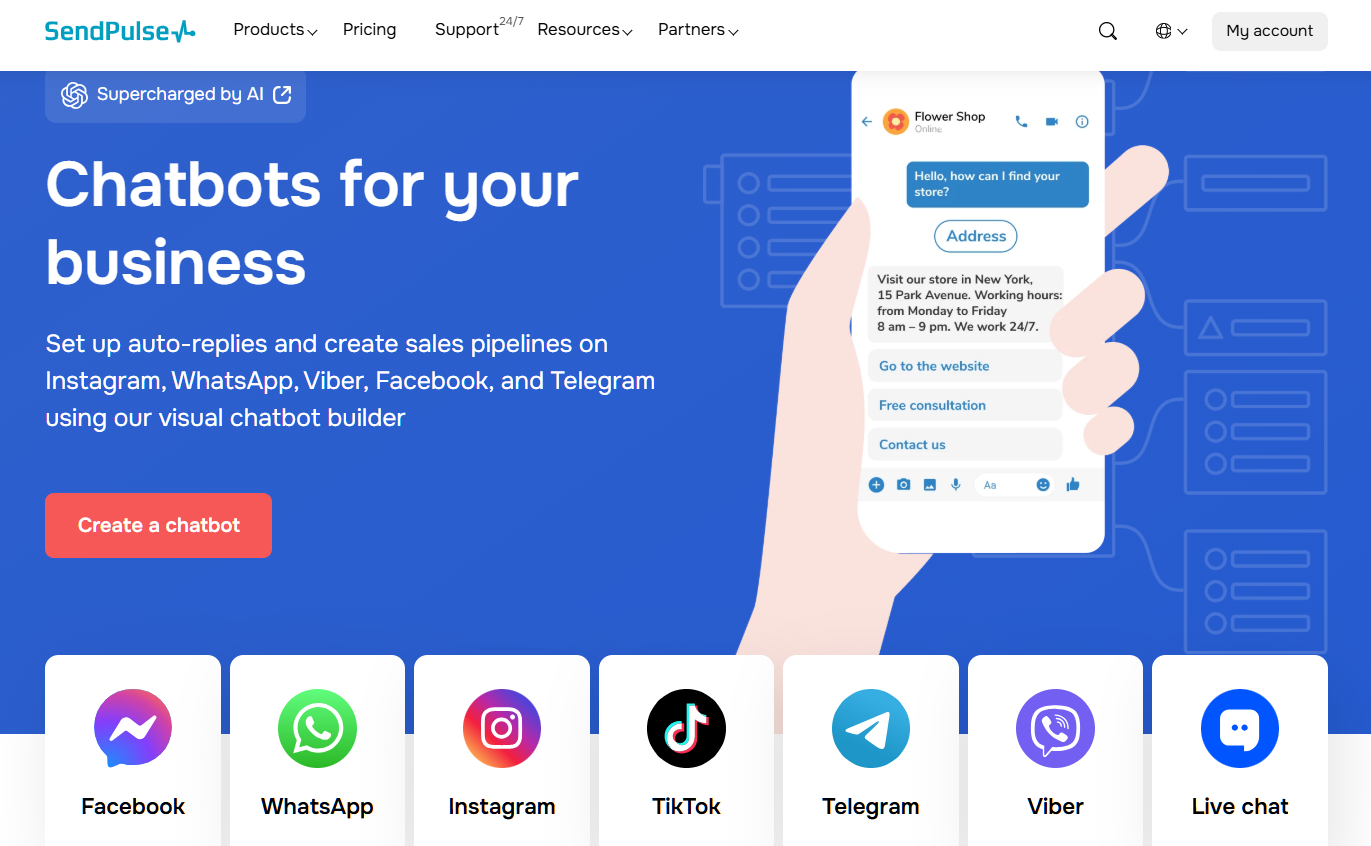
SendPulse chatbots allow businesses to acquire customers via popular messengers and social media platforms like Instagram, WhatsApp, Facebook and even TikTok. Set auto replies, integrate payment systems and collect contact information on channels your customers use.
Built-in CRM helps manage customer data, segment subscribers and personalize messages across other channels like email or SMS marketing.
How much does it cost? Starts from $79/month.
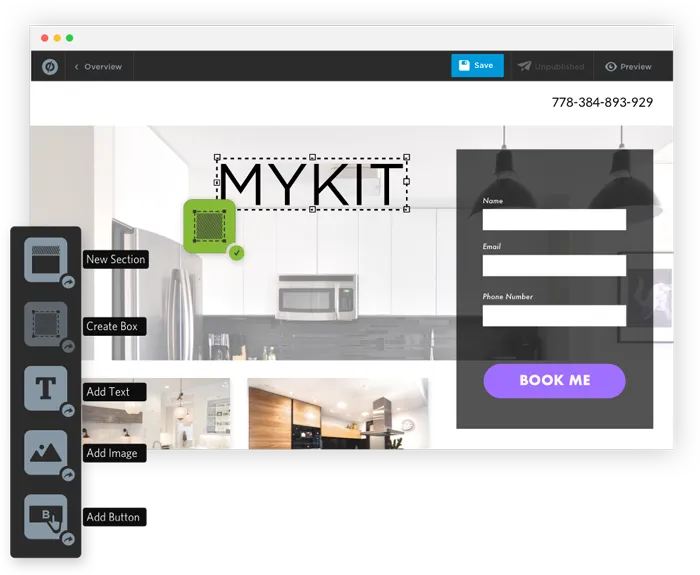
Unbounce is a landing page software that gives users the flexibility to build, launch and test high-converting landing pages, sticky bars, and popups through a drag and drop builder.
No need to hire a developer or learn how to code.
How much does it cost? $29/month.
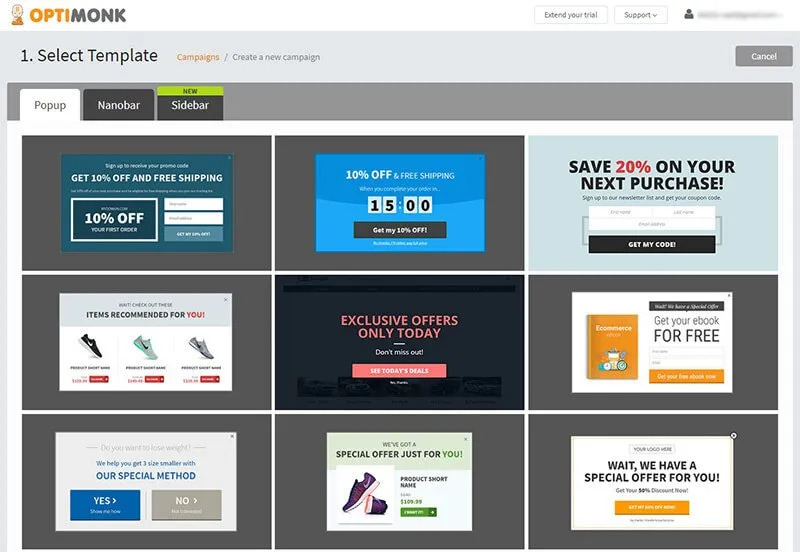
Did you know that 97% of visitors leave the website without purchasing anything?
OptiMonk aims to solve this dilemma by creating an exit-intent pop-up tool that’s designed to help merchants capture abandoning visitors. Businesses looking for similar functionality can also consider an OptiMonk alternative to explore different features and pricing options.
Over the years, they’ve expanded their offerings with a complete on-site message toolkit that lets sellers increase their subscribers, aggregate feedback, improve conversion rate optimization, and reduce shopping cart abandonment.
How much does it cost? Starts at $7/month (billed annually)

OptinMonster makes it easy for businesses to convert visitors into leads and sales through personalized campaigns.
With features like exit-intent popups, geolocation targeting, and drag-and-drop campaign builder, you can easily craft and deliver high-converting messages without coding.
That’s why brands choose OptinMonster for growing their email lists, recovering abandoned carts, and increasing conversions across their sites.
How much does it cost? $15/month
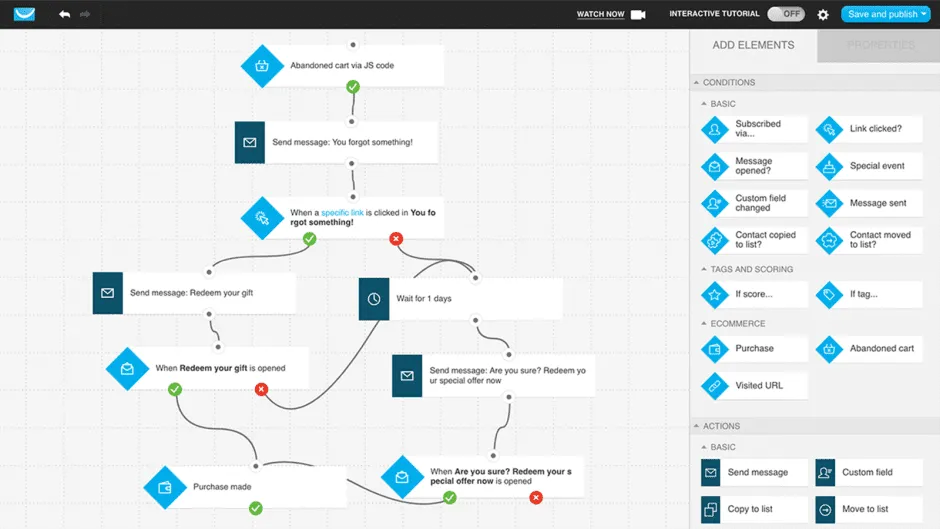
GetResponse is an all-in-one online marketing platform with features like email marketing, marketing automation, and webinars. The software helps you create high-converting landing pages, plan customer journeys, and improve customer experience.
How much does it cost? $49 per month.
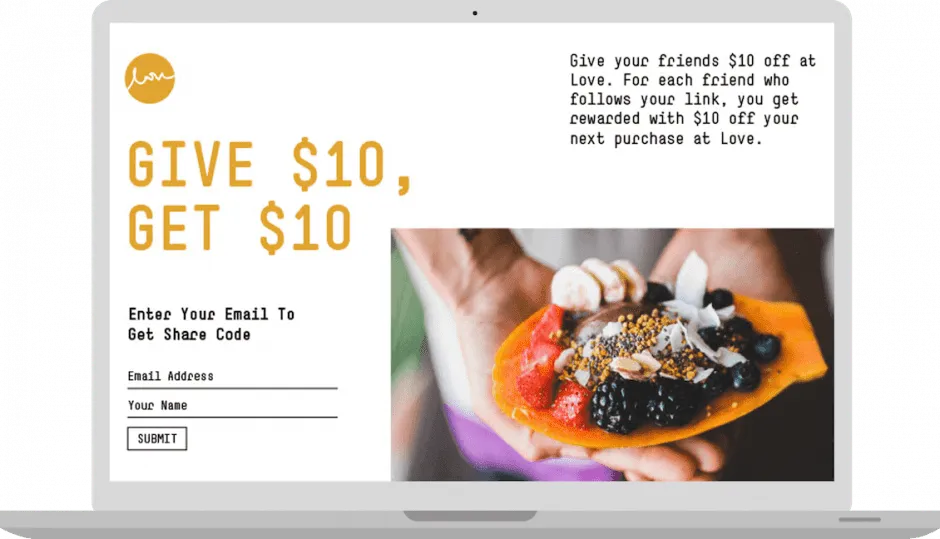
ReferralCandy is a referral marketing and customer acquisition management tool that incentivizes customers to promote a brand or company’s products within their network. It’s basically word-of-mouth marketing on steroids.
How much does it cost? $29/month.
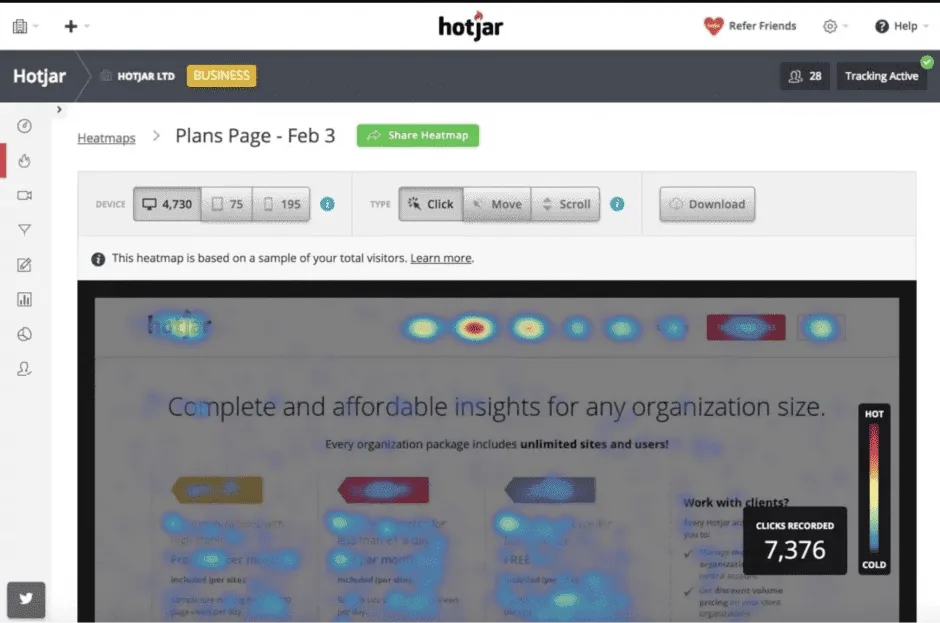
Hotjar combines behavior analytics with product feedback tools for product managers, helping you optimize customer journeys.
It can visually represent click-through rates through heatmaps, record visitor behavior onsite, test landing pages, and analyze forms to improve completion rates. Additionally, it lets businesses aggregate feedback by creating polls or surveys and recruiting user testers.
How much does it cost? $10 per month
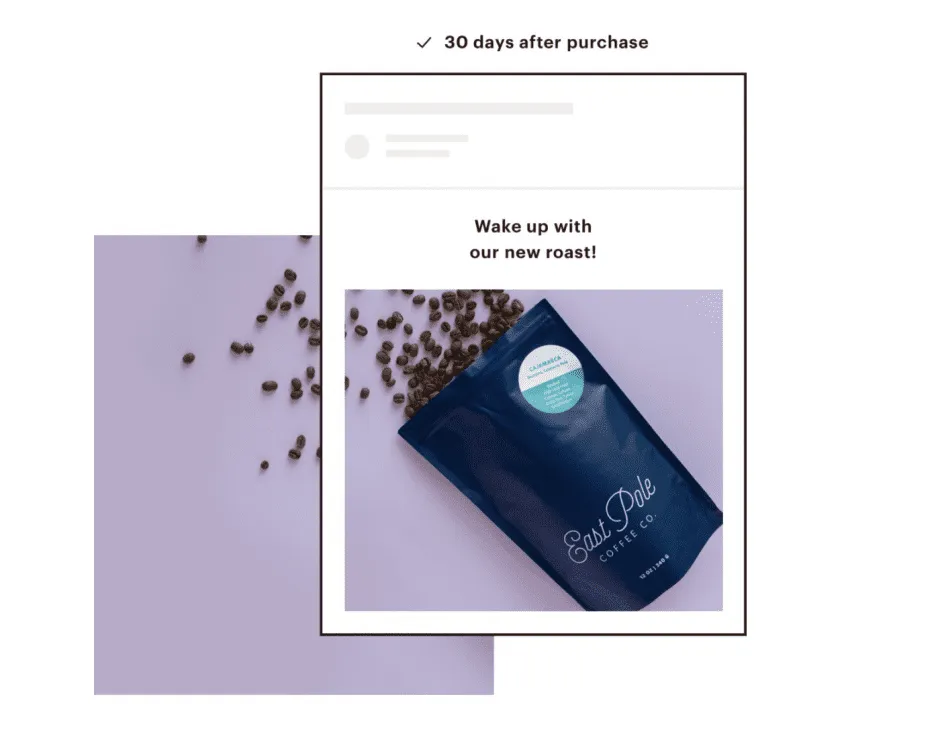
Mailchimp is a marketing automation platform that lets users create, design, and share ad campaigns with relevant customers and clients.
Mailchimp’s automation tool lets business owners use data for acquiring potential customers, A/B test campaigns, create reports, and personalize their marketing.
How much does it cost? $14/month

Outgrow helps marketing teams create interactive content like calculators, forms, and quizzes that can boost lead generation and go viral. The calculators are also a good addition if your content discusses the cost and financial figures.
Their analytics features include hyper-targeted sales outreach, the ability to track traffic from search engines and improve conversion rate optimization from across all your marketing channels.
How much does it cost? $3995 per month.

Wunderkind identifies 40% of a site’s anonymous traffic and tracks the users through their devices and sessions. Afterward, marketers can use the data to personalize their customer experience, send triggered emails, create targeted ads, and invest in premium ad placements.
How much does it cost? $19 per month.
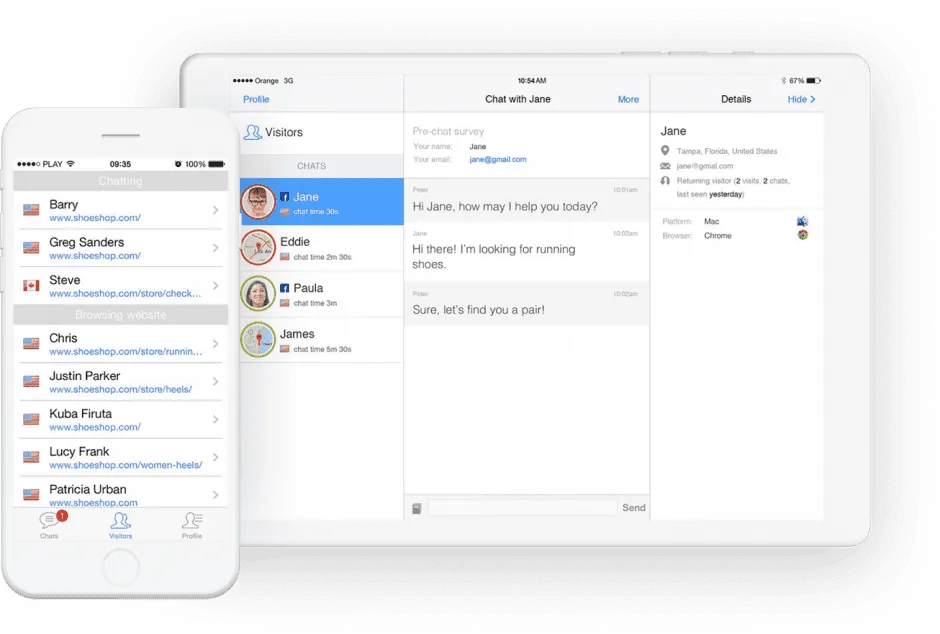
LiveChat lets salespeople and marketers chat with potential leads, send customer details to CRM, manage orders, and accept payments. It’s definitely a lot more convenient than scheduling phone calls and writing every email.
How much does it cost? Starts from $80 per month.
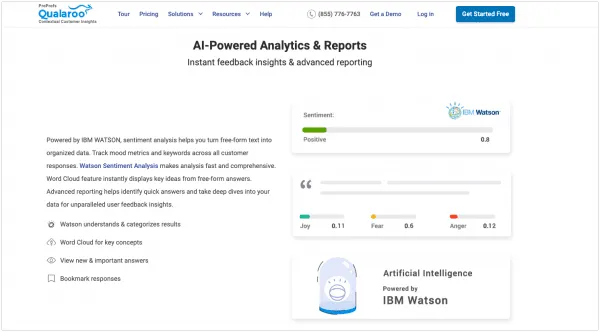
Qualaroo’s pop-up Nudge surveys help you collect in-context insights from website visitors and app users using 100+ survey templates, multiple surveys, and question types and tell you what makes your prospects turn into your paying customers.
You can target specific audiences using branching, skip logic, and advanced targeting to accumulate precise data and create marketing strategies that convert.
How much does it cost? Starts from $29/month
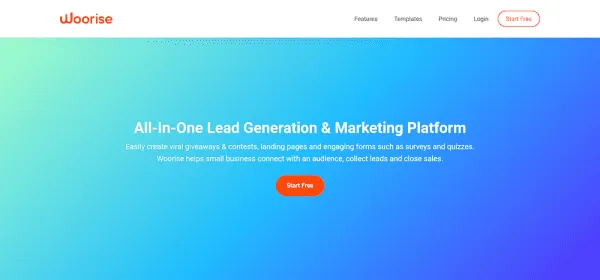
Woorise is an all-in-one lead generation platform that allows you to create a wide range of interactive campaigns such as viral giveaways & contests, landing pages, forms, surveys, quizzes, accept payments and more to collect leads and engage your audience.
Woorise also integrates with popular marketing platforms such as Mailchimp, Hubspot, ActiveCampaign, Aweber, Google Analytics, Bitly, Zapier, PayPal, Stripe and many more.
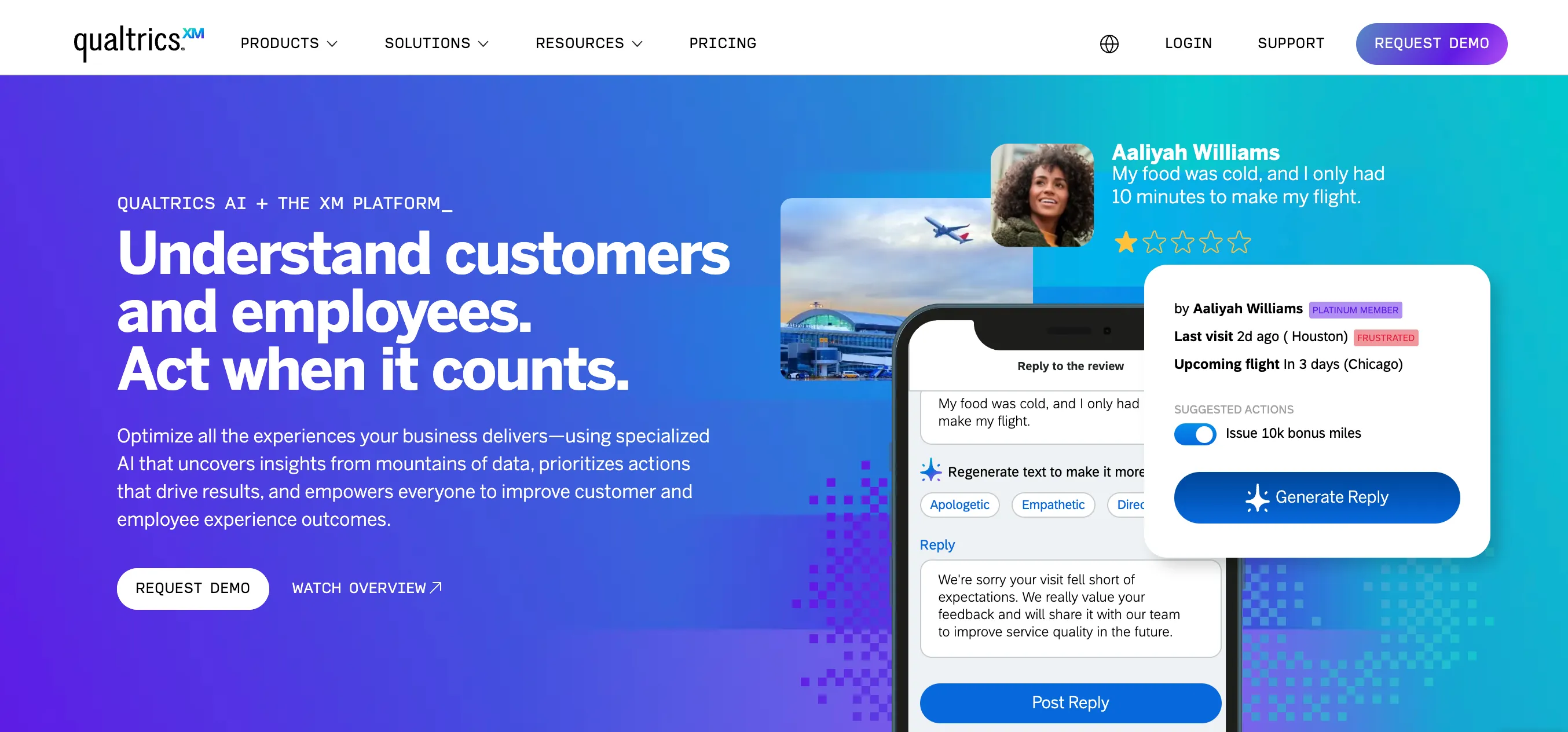
Qualtrics is not a customer acquisition tool in the traditional sense, but supports customer acquisition efforts by providing insights into customer behavior, preferences, and pain points. It helps with this by analyzing customer feedback, measuring brand perception, and identifying key drivers of customer engagement.
Businesses should consider Qualtrics pricing, features, and scalability to determine if it’s the right fit for their customer acquisition strategy.
Creating a customer acquisition process involves having a strong inbound marketing strategy that includes content creation, targeted ads, live chat, and plenty of A/B testing.
But many of these things are already automated in helpful tools and apps that you can easily install in your online store. If you’re not sure how to start with your marketing efforts, identify your target audience and find out how they like to engage with brands. Use onsite targeting to capture their attention at the right moment. Once you understand how to acquire customers, it’ll be much easier to choose a tool that helps move them along your sales cycle.
Marquis Matson is an SEO analyst, content marketer, and writer. She specializes in search engine optimization for ecommerce sites in the yoga and wellness niche. She lives as a digital nomad, spending time in Ecuador, California, Thailand, India, Australia, and more. You can find her on LinkedIn, Twitter, or at marquismatson.com.
Grow your sales at a ridiculously
lower CAC.